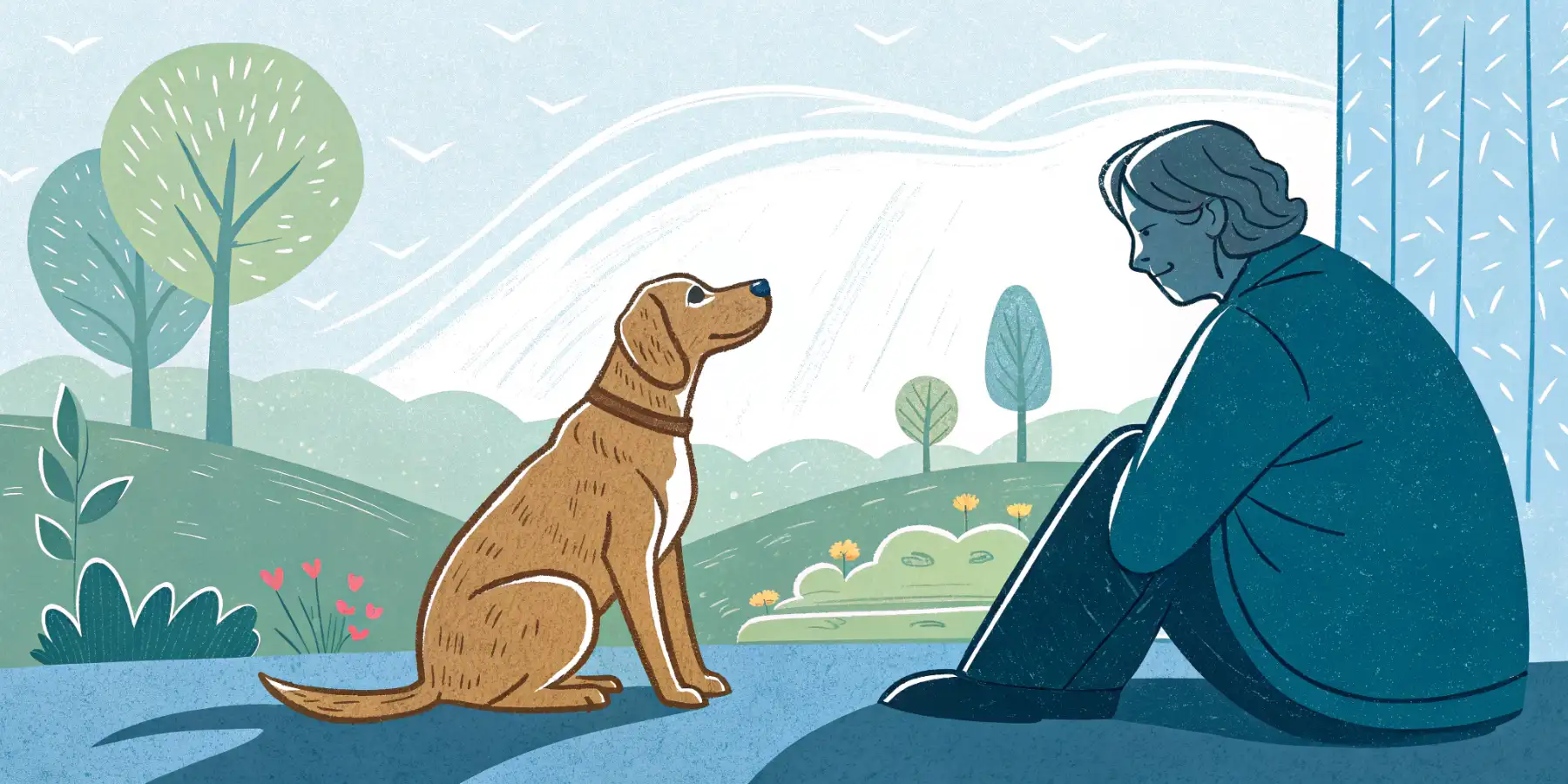
Senior Dog Vision & Hearing Loss: What You Need to Know
Senior dog vision fading? Hearing loss got you worried? Learn how to help your aging best friend thrive! #seniordog #doghealth
Understanding Changes in Sensory Perception: Vision and Hearing Loss in Senior Dogs
As our canine companions enter their golden years, they often experience changes in their sensory abilities, particularly in vision and hearing. Just like us, dogs can develop age-related conditions that impact their sight and sound, and understanding these changes is crucial for providing the best possible care. In this article, we’ll delve into the common causes of vision and hearing loss in senior dogs, explore how to recognize the signs, and offer practical tips for adapting to your dog’s changing needs.
The Aging Senses: What to Expect
Senior dog care requires a proactive approach, and being aware of potential sensory decline is a key part of that. Age-related hearing loss in dogs and vision loss in senior dogs are not uncommon. These changes can be gradual, making them easy to miss at first, or they can appear more suddenly, often depending on the underlying cause.
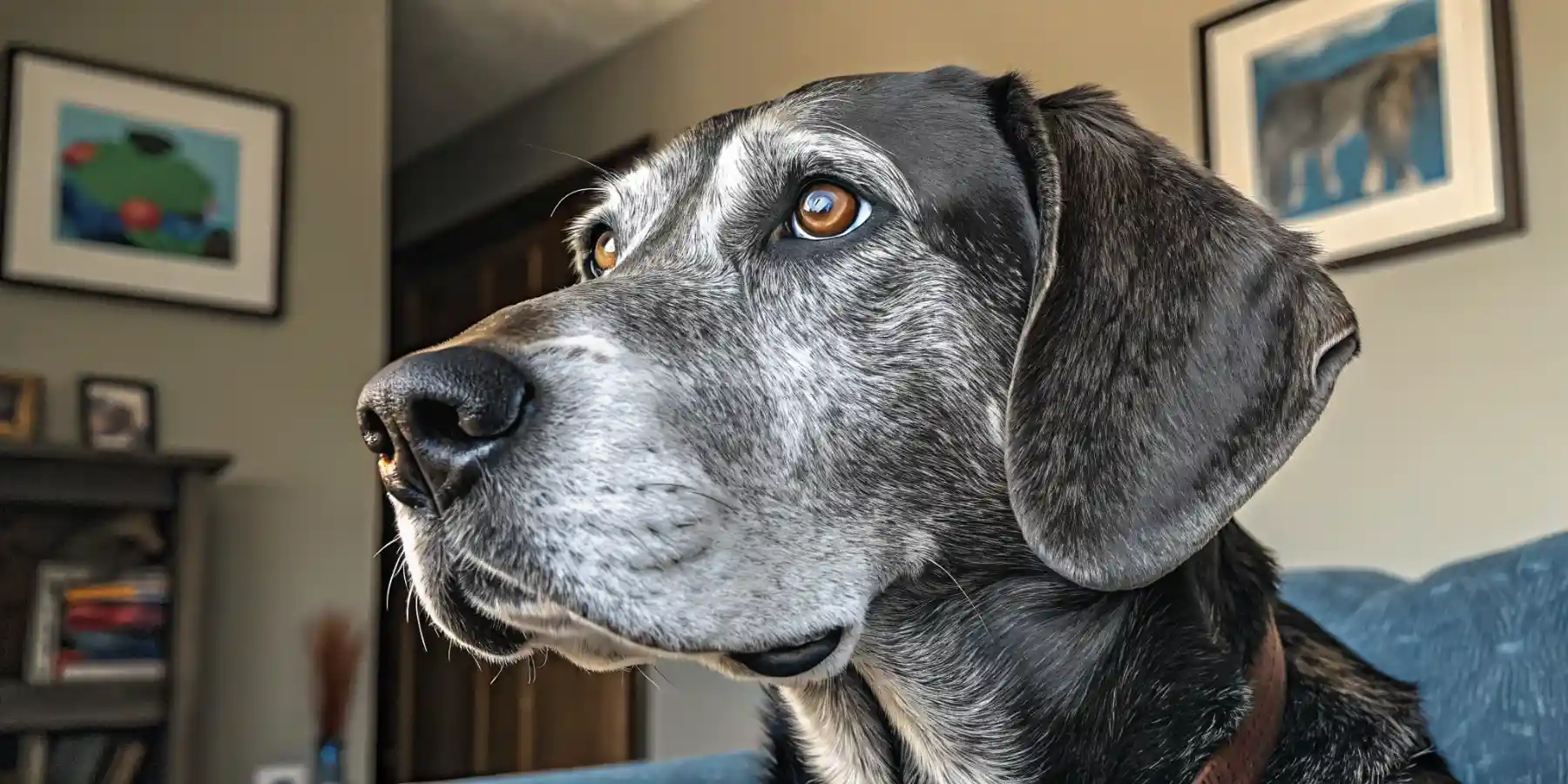 Image: A close-up of a senior dog with a graying muzzle and visible cataracts in its eyes, illustrating a common sign of age-related vision changes.
Image: A close-up of a senior dog with a graying muzzle and visible cataracts in its eyes, illustrating a common sign of age-related vision changes.
Vision Loss: More Than Just “Old Age”
While “old age” is often cited as the reason for declining vision, it’s important to understand the specific conditions that can lead to vision loss in senior dogs. Some of the most common culprits include:
- Cataracts: These are cloudy opacities that form on the lens of the eye, obstructing vision. While some cataracts are hereditary, many develop as a result of aging. I’ve seen countless dogs significantly benefit from cataract surgery, regaining much of their lost sight. However, surgery isn’t always an option, and managing the condition becomes paramount.
- Nuclear Sclerosis: Often mistaken for cataracts, nuclear sclerosis is a normal aging change where the lens appears bluish-gray. It usually doesn’t significantly impair vision.
- Glaucoma: This condition involves increased pressure within the eye, which can damage the optic nerve and lead to blindness. Glaucoma can be incredibly painful and requires immediate veterinary attention. Early detection is crucial for managing glaucoma in senior dogs.
- Progressive Retinal Atrophy (PRA): This is a group of inherited diseases that cause gradual degeneration of the retina, leading to progressive vision loss and eventual blindness. Unfortunately, there is no cure for PRA, but genetic testing can help identify at-risk dogs.
- Sudden Acquired Retinal Degeneration Syndrome (SARDS): As the name implies, SARDS causes sudden and irreversible blindness. The cause is unknown, and there is no effective treatment.
Recognizing the Signs of Vision Loss
Detecting vision loss early is vital. Pay attention to these potential signs:
- Bumping into furniture or walls
- Hesitancy to go down stairs or jump on furniture
- Increased clumsiness or disorientation
- Changes in eye appearance (cloudiness, redness)
- Reluctance to go out at night
- Increased anxiety or fearfulness, especially in unfamiliar environments
If you notice any of these signs, schedule a veterinary ophthalmology exam as soon as possible.
Hearing Loss: A Silent Decline
Hearing loss in dogs, like vision loss, can be caused by various factors. Some of the most common include:
- Age-Related Degeneration: Just like humans, dogs can experience age-related deterioration of the structures in the inner ear.
- Chronic Ear Infections: Untreated or recurring ear infections can damage the delicate structures of the ear, leading to hearing loss. Regular ear cleaning is essential for preventing ear infections and preserving hearing in senior dogs.
- Noise-Induced Hearing Loss: While less common, exposure to loud noises over time can contribute to hearing loss.
- Certain Medications: Some medications can have ototoxic (ear-damaging) effects.
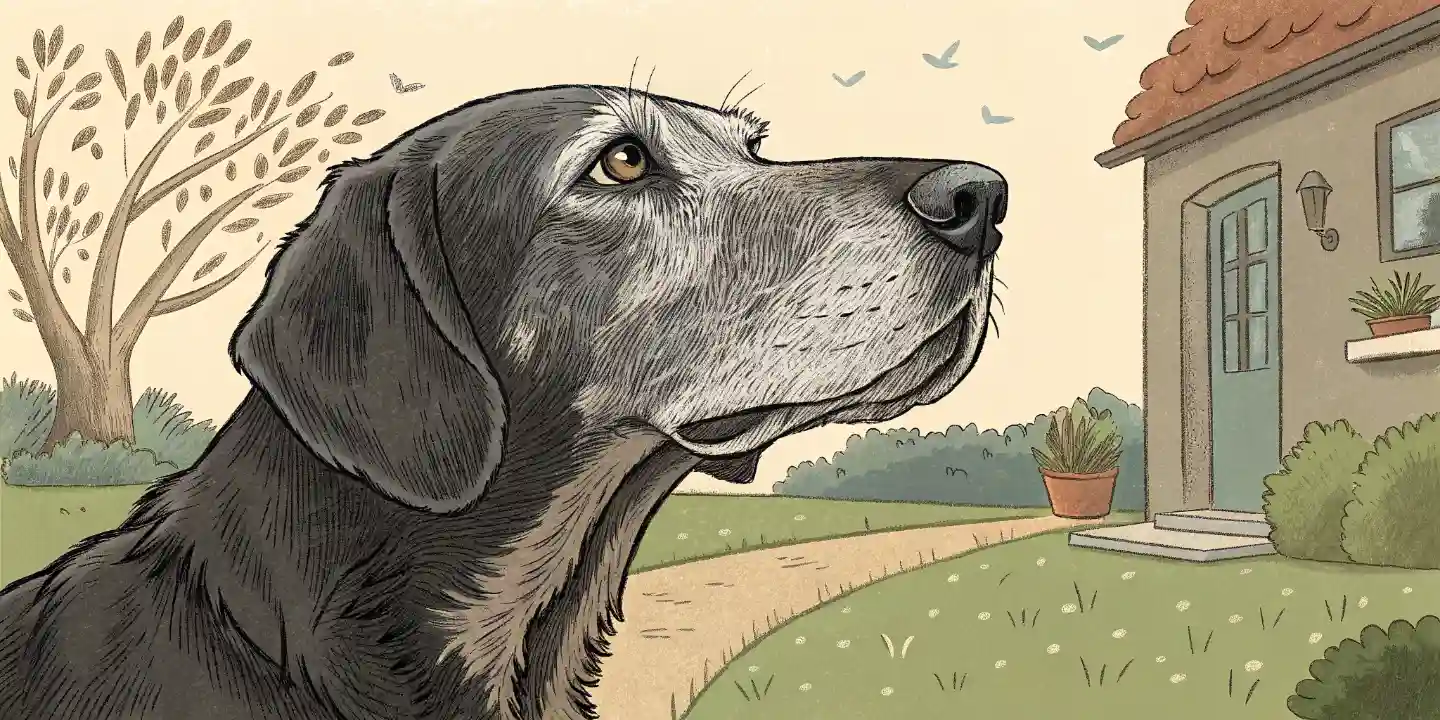 Image: A senior dog with its head tilted, seemingly listening intently, which could be a sign of trying to compensate for hearing loss.
Image: A senior dog with its head tilted, seemingly listening intently, which could be a sign of trying to compensate for hearing loss.
Recognizing the Signs of Hearing Loss
Hearing loss can be subtle, especially if it develops gradually. Be on the lookout for these signs:
- Failure to respond to your voice or familiar commands
- Increased sleeping or difficulty waking up
- Excessive barking
- Startling easily, especially when approached from behind
- Changes in behavior, such as increased anxiety or irritability
A BAER (Brainstem Auditory Evoked Response) test is a diagnostic test that can objectively measure a dog’s hearing ability. If you suspect your dog is losing their hearing, talk to your veterinarian about whether a BAER test is appropriate.
Adapting to Your Dog’s Changing Needs
Regardless of whether your dog is experiencing vision loss, hearing loss, or both, there are many ways you can adapt to their changing needs and ensure their comfort and safety:
- Maintain a Consistent Environment: Avoid rearranging furniture or changing their routine, as this can be disorienting for dogs with vision or hearing loss.
- Use Verbal Cues and Hand Signals: Even if your dog’s hearing is declining, they may still be able to respond to hand signals. Pair verbal cues with hand signals to reinforce communication.
- Be Mindful of Approach: Approach your dog slowly and gently, especially if they are hard of hearing or visually impaired. Avoid startling them.
- Use Scent Markers: Use different scents (e.g., lavender, rosemary) to mark important areas like food bowls, water bowls, and doorways.
- Provide Extra Supervision: Supervise your dog closely, especially when they are outdoors, to prevent accidents. Consider using a leash even in familiar areas.
- Invest in Assistive Devices: There are various assistive devices available, such as dog wheelchairs, halo harnesses for visually impaired dogs, and vibrating collars for deaf dogs.
- Consider Dog-Safe “Baby Proofing”: Just as you’d protect a baby from sharp corners, secure loose rugs, cover exposed wires, and pad furniture corners to help a dog with balance or depth perception issues.
- Consult with a Veterinary Behaviorist: A veterinary behaviorist can provide guidance on managing any anxiety or behavioral changes that may arise due to sensory loss.
- Prioritize Regular Veterinary Checkups: Regular checkups allow your veterinarian to monitor your dog’s overall health and address any emerging issues promptly.
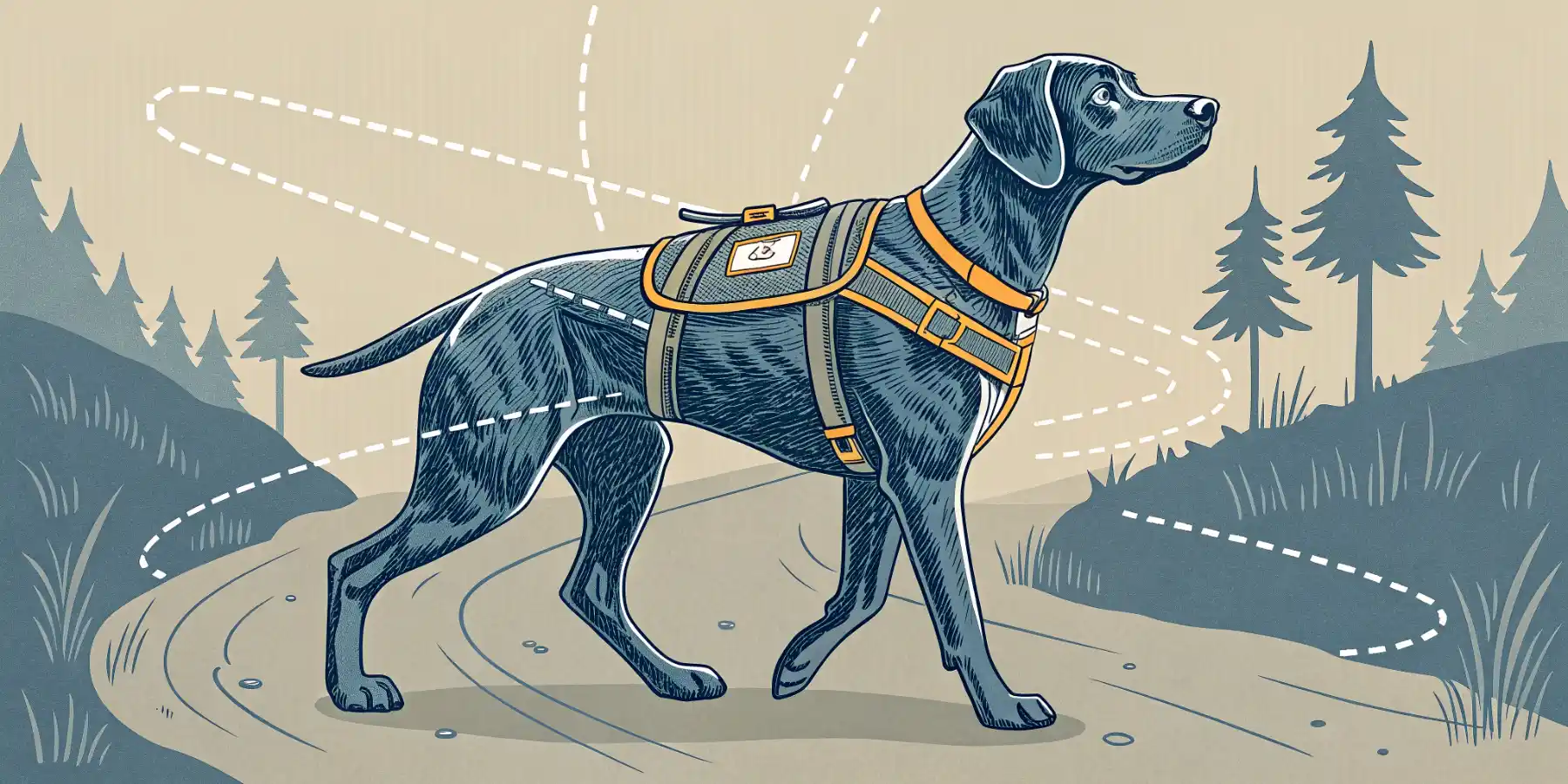 Image: A dog wearing a halo harness to help them navigate obstacles, a helpful tool for visually impaired dogs.
Image: A dog wearing a halo harness to help them navigate obstacles, a helpful tool for visually impaired dogs.
Quality of Life: Focusing on What Matters
Ultimately, the goal is to ensure your senior dog continues to enjoy a high quality of life despite any sensory changes. This means focusing on what they can still do and providing them with plenty of love, attention, and comfort. Senior dog care with compassion can make all the difference.
In my experience, even dogs with significant vision or hearing loss can live happy and fulfilling lives with the right support and adaptations. It requires patience, understanding, and a willingness to adjust your approach, but the rewards are immeasurable. If you have a senior dog experiencing vision or hearing loss, please don’t hesitate to reach out to your veterinarian for guidance and support. They can help you develop a personalized care plan to address your dog’s specific needs and ensure they continue to thrive in their golden years.
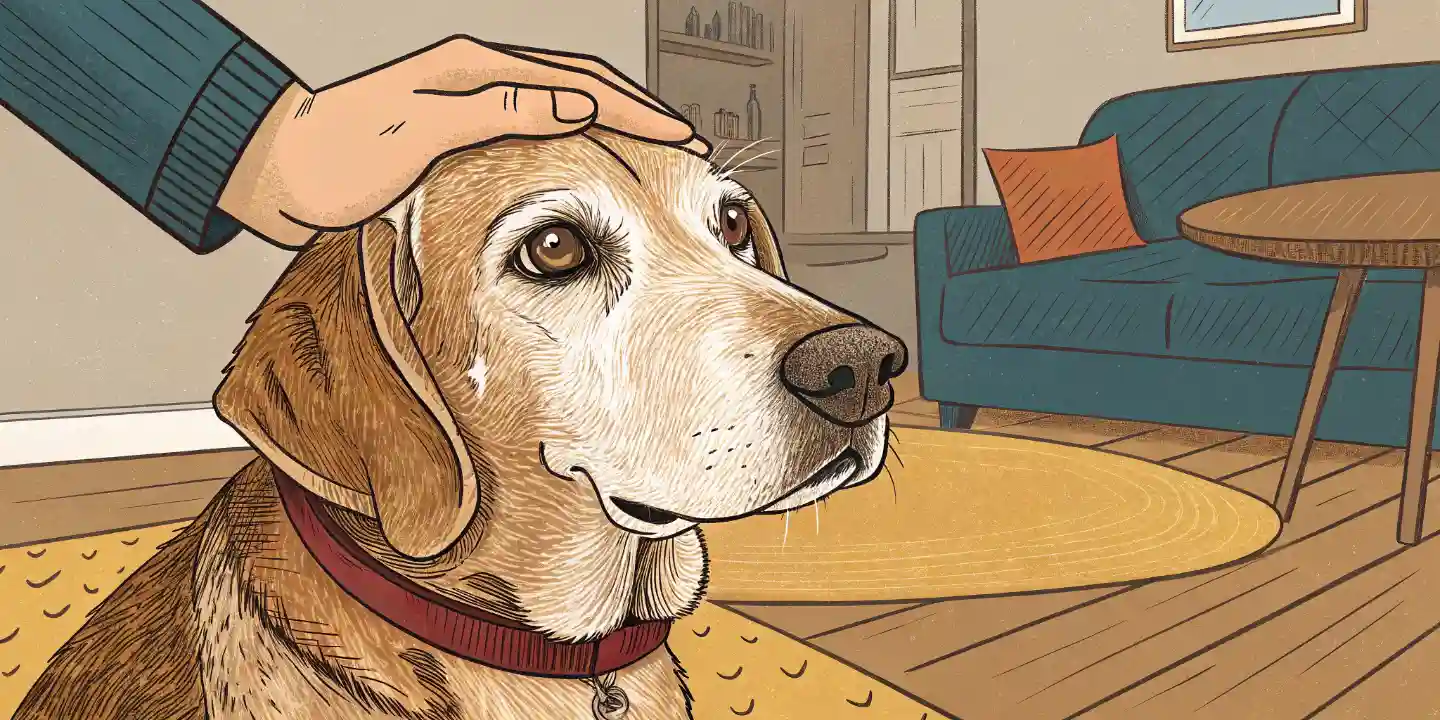 Image: A senior dog receiving a gentle pat on the head, symbolizing the love and care that can improve their quality of life despite sensory changes.
Image: A senior dog receiving a gentle pat on the head, symbolizing the love and care that can improve their quality of life despite sensory changes.

